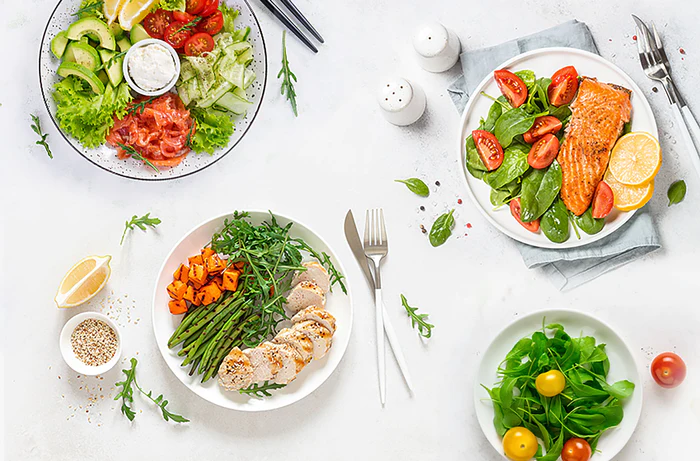Within every cell in our body are ancient bacterial fragments called mitochondria. Essentially, the role of mitochondria is to take the food we eat and turn it into energy (a.k.a ATP). For an athlete, without adequate levels of ATP, muscles can’t contract, nor can they repair the damage done by exercise. The only way to make enough ATP is to make sure that adequate levels of oxygen are getting to the muscle cell and at the same time making sure the mitochondria in the muscle cells are working at peak efficiency to generate as much ATP as possible. Anything that increases ATP production will give the athlete a significant advantage over their competitors.
Polyphenols and Performance
The role of polyphenols in athletic performance is only now beginning to emerge. Polyphenols operate at several levels including gene activation which leads to increased mitochondrial efficiency and increased blood flow to deliver more oxygen to the mitochondria. In particular, replacing damaged mitochondria while simultaneously replacing them with newly synthesized mitochondria is a key function of polyphenols. Since mitochondria supply 85-95% of the energy to a muscle cell, the more efficient the mitochondria are, the greater the athletic performance.
The Impact of Polyphenols on Recovery Times
Polyphenols are the chemicals that give fruits and vegetables their color. They are also key components for gut health as they function as the primary guardians of the gut to defend it against pathogenic microbes. However, small levels of polyphenols can also enter into the blood. Once in the blood, they can become gene activators (1). In particular, they activate the gene transcription factors that cause the increased synthesis of specialized proteins. One of these gene transcription factors is Nrf2 known to increase the expression of anti-oxidative enzymes that are a 1000 times more powerful than standard anti-oxidants such as Vitamin C or Vitamin E in reducing excess free radical production. This is important for reducing delayed onset muscle soreness (DOMS). DOMS is the extended muscle pain and soreness due to injury that reduces strength until the muscle is finally healed. That takes time, and that is why you need increased recovery times the more intense you workout.
The other gene transcription factor activated by polyphenols is AMP kinase. AMP kinase is the master switch for your metabolism. In particular, it is the key to replacing damaged mitochondria (mitophagy) and simultaneously replacing them with new ones (biogenesis). Since the cells in the body need ATP on a constant basis, this is equivalent to changing tires on your car while driving 60 miles an hour. It is only possible if AMP kinase is working at full efficiency. Another benefit of adequate levels of polyphenols in the blood is to increase blood flow by increasing nitric oxide (NO) production which increases oxygen transfer to the mitochondria for still greater ATP production (2). The mechanism of polyphenol-induced vasodilation appears to be via the enhanced conversion of dietary nitrates (primarily found in green leafy vegetables) into NO. The greater the number of hydroxyl groups on the polyphenol, the more efficient the conversion of dietary nitrate into NO (3). Thus the benefits of taking nitrate supplements such as beetroot juice (4) can be greatly enhanced in the presence of high levels of polyphenols.
Why You Need Adequate Intake of Polyphenols for Performance
This is all great news for the athlete. The bad news is that the bioavailability of polyphenols into the blood is low, and even if they enter the blood they are rapidly removed making their lifetime in the blood very short. This means to get the full benefits of polyphenols for sports performance, they have to be taken at high concentrations on a continual basis to maintain improved blood flow and optimal ATP production. Since the levels of polyphenols in fruits and vegetables is low (0.1 to 0.2% by weight), you would have to consume a minimum of 10 servings of fruits and vegetables per day to obtain the minimum levels of polyphenols required for enhanced sports performance. For many athletes, that sounds like Mission Impossible.
Purification of Polyphenols
Fortunately, polyphenols can be purified to high concentrations as extracts. Supplementation with polyphenol extracts may potentially achieve adequate levels of polyphenols in the blood to increase ATP production and decrease delayed muscle soreness.
Not All Polyphenols Are the Same
There are more than 8,000 known polyphenols, all different in structure. The most effective polyphenols fall into a general classes known as flavonoids. These polyphenols have a fused phenol ring structure that provides a unique spatial configuration to enhance their action to activate gene transcription factors. Furthermore, the number of hydroxyl groups in its structure determines the bioavailability of the polyphenol. The one group of flavonoid polyphenols that have the greatest bioavailability is delphindins, and they appear to be the only type of polyphenol that can be absorbed intact by the body (5). A rich source of delphinidins is blueberries. In particular the Maqui berry grown in the Patagonia region of Chile has the highest known concentration of delphinidins. In addition, the most studied flavonoid polyphenol for increasing blood flow are those from cocoa (6-8). Thus, combinations of Maqui and cocoa polyphenol extracts may provide the greatest potential for maximum impact in sports performance.
How Many Polyphenols Do You Need For Performance?
A lot. You need probably at least 1,000 mg of polyphenol extract per day. Furthermore, that total amount should also be spread evenly throughout day to maintain adequate levels of polyphenols in the blood. Frankly, no one is going to be taking capsules all day long to achieve that goal. This is why the most realistic way is the use of food products (bars) that not only supply necessary nutrients (you have to eat) to maintain stable blood sugars levels, but also supply the necessary levels of proven polyphenol extracts to constantly activate the genes needed for optimal athletic performance. References:
References:
- Sears B. The Mediterranean Zone. Ballantine Books. New York, NY (2014)
- Lundberg JO et al. “Strategies to increase nitric oxide signaling in cardiovascular disease.” Nat Rev Drug Dis 14: 623-641 (2015)
- Rocha SA et al. “Dietary nitrate in nitric oxide biology.” Curr Drug Targets 12: 1351-1363 (2011)
- Wylie LJ et al. “Beetroot juice and exercise: Pharmacodynamic and dose-response relationships.” J Appl Physiol 115: 325-336 (2103)
- Matsumoto H et al. “Orally administered delphinidin 3-rutinoside and cyanidin 3-rutinoside are directly absorbed in rats and humans and appear in the blood as the intact forms.” J Agric Food Chem 49: 1546-1551 (2001)
- Schroeter H et al. “(-)-Epicatechin mediates beneficial effects of flavanol-rich cocoa on vascular function in humans.” Proc Natl Acad Sci USA 103: 1024-1029 (2006)
- Heiss C et al. “Endothelial function, nitric oxide and cocoa flavanols.” J Cardiovasc Pharmacol 47 Suppl 2:S128-135 (2006)
- Desideri G et al. “Benefits in cognitive function, blood pressure, and insulin resistance through cocoa flavanol consumption in elderly subjects with mild cognitive impairment: the Cocoa, Cognition, and Aging (CoCoA) study.” Hypertension 60:794-801 (2012)






Let Us Know What You Thought about this Post.
Put your Comment Below.